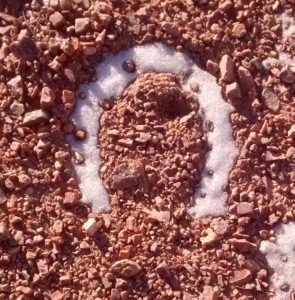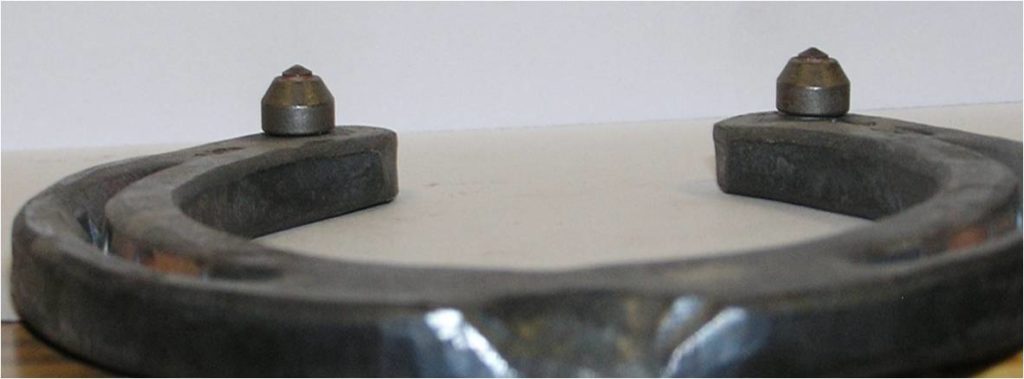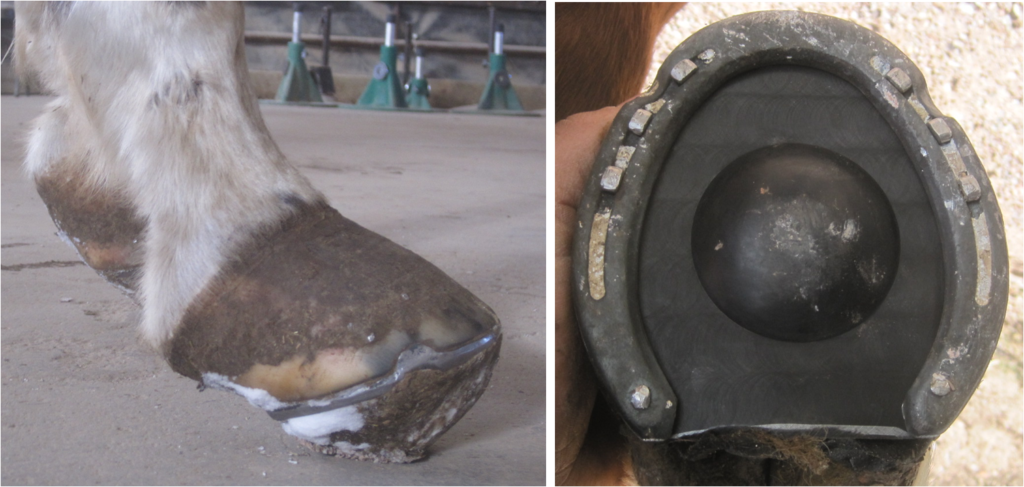Riding in the Winter
 During the winter months, a lot of horse owners opt to have shoes pulled and let horses go barefoot through the winter. This can be a good idea for many horses because they will not be used as much and shoes have a tendency to make snow build-up or “snowballing” worse in the bottom of the feet. But there are some cases where horses need to keep shoes on during the winter. For instance, working and recreational horses still used in the winter may need to keep shoes on. Horses that need therapeutic shoes to stay sound would be in pain if shoes were removed for the winter season. A competent farrier can see to the needs of a horse during the winter months to keep both horse and rider comfortable and safe.
During the winter months, a lot of horse owners opt to have shoes pulled and let horses go barefoot through the winter. This can be a good idea for many horses because they will not be used as much and shoes have a tendency to make snow build-up or “snowballing” worse in the bottom of the feet. But there are some cases where horses need to keep shoes on during the winter. For instance, working and recreational horses still used in the winter may need to keep shoes on. Horses that need therapeutic shoes to stay sound would be in pain if shoes were removed for the winter season. A competent farrier can see to the needs of a horse during the winter months to keep both horse and rider comfortable and safe.
Working horses at ranches and feedlots require protection and traction to prevent slipping on ice. Also some recreational riders are not deterred by colder temperatures and continue their pursuits in winter. Traction on shoes keeps the horse and rider safe and also does a lot to maintain the horse’s confidence. There are many kinds of traction devices that a farrier can provide for the horse.
Borium is made of tungsten carbide particles and encased in a tube. It is usually applied with an oxyacetylene torch to shoes that have already been fit to the horse’s foot. Borium comes in different screen sizes of particles. The coarser the Borium is the more traction there will be. Most horse shoe Borium ranges from screen size 5 to 10. Some traction, like Drill-Tek, may also be brazed onto a shoe in the forge when it is combined with 20 Mule Team Borax.

Traction devices such as borium, screw-in studs or drive-in studs (pictured) can be attached to shoes to prevent slippage during winter months.
Another way to apply traction to a shoe is through drive-in or screw-in studs. These are protrusions from the shoe that can be applied without the use of a forge or torch. In order to apply screw-in studs, holes must be drilled and tapped in the shoe. This can be time consuming and frustrating if (when) drill bits break. Screw-in studs are useful in that they can be applied when the horse needs the traction (like going on a ride) and removed and the hole filled with cotton to prevent dirt fill-in when the horse no longer needs the traction (like riding in a trailer). Drive-in stud application may be easier because the holes only need to be drilled (not tapped) but once wedge shaped studs are driven into the shoe, they are difficult to remove.
Whenever traction is applied, it is also a good idea to apply snowball pads as well to prevent snow build-up in the bottom of the foot. If a horse has adequate traction on a shoe but no way to prevent snowballing, the snow build-up may actually push the shoe (with the traction on it) away from the ground and the traction is no longer functional. Snowball pads come in two types: full pads with a bubble in it (popper pads) or rim snowball pads that fit on the inner rim. Both types work by flexing and pushing snow out of the foot or preventing build-up in the first place.
When horses’ feet are “winterized” by applying traction and snowball pads, they will be more confident walking on ice and snow and the rider and horse will both be safe. It may cost a little more but it’s less expensive than a hospital bill for a broken leg!
Related Posts
-
Sir Isaac Newton, one of the world’s greatest scientists w...Jul 12, 2011 / 0 comments
-
Many of the well-known clinicians and horse trainers today s...Apr 13, 2020 / 0 comments
-
More than one hundred years ago farriers were confronted wit...Mar 26, 2010 / 21 comments
Blog Categories
- Anatomy
- Best Business Practices
- Conformation
- Current Events
- Customer Service
- Draft Horse Shoeing
- Equine Soundness
- Essential Anatomy Kit
- Farrier Careers
- Farrier training
- Foal soundness
- Horse Care
- Horse Foot Care
- Horse Owner Tips
- Horsemanship
- Horseshoeing
- Horseshoeing History
- Iron and Forge Work
- Student Spotlight
- Uncategorized
- Veterinary Care
Blog Archives
Contact Us
Butler Professional Horseshoeing School
495 Table Road
Crawford, NE 69339
(800) 728-3826
jacob@dougbutler.com
Subscribe to Our Blog
Get Our Free e-Book!
If you think you want to become a farrier (or know someone who does), this book can help you make that decision. Horse owners will learn the importance of choosing a qualified farrier and how to select the “right” one.
[ Get the e-Book Now! ]
- Follow:

